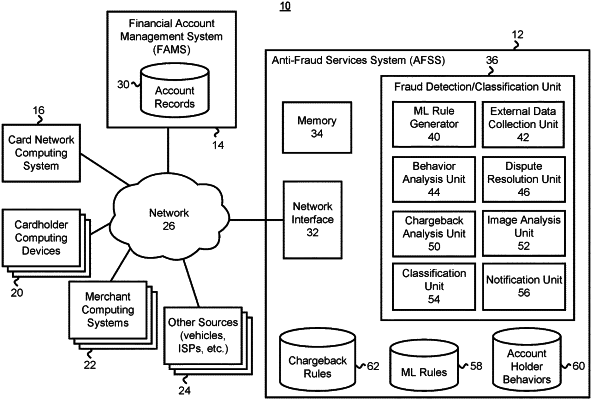| CPC G06Q 30/0185 (2013.01) [G06N 5/046 (2013.01); G06N 20/00 (2019.01); G06Q 20/102 (2013.01); G06Q 20/20 (2013.01); G06Q 20/24 (2013.01); G06Q 20/3224 (2013.01); G06Q 20/34 (2013.01); G06Q 20/401 (2013.01); G06Q 20/4016 (2013.01); G06Q 20/407 (2013.01); G06Q 20/409 (2013.01); G06Q 30/0225 (2013.01); G06Q 30/0248 (2013.01)] | 20 Claims |

|
1. A computer-implemented method, comprising:
retrieving, by a processor, historical account data associated with a plurality of financial accounts, wherein the historical account data includes fraud classification labels that identify different types of fraud that have been determined to be associated with at least one of corresponding transactions or corresponding financial accounts;
generating, by the processor, fraud classification rules by training a machine learning program, based on the historical account data, to identify factors that are predictive of the different types of fraud indicated by the fraud classification labels;
predicting, with the processor, and by applying the fraud classification rules to account data associated with a particular financial account, a preliminary fraud classification corresponding to a transaction associated with the particular financial account, wherein the preliminary fraud classification identifies a particular type of fraud, of the different types of fraud, that is predicted to be associated with the transaction;
receiving, by the processor, a final fraud classification associated with the transaction, wherein the final fraud classification confirms or contradicts the preliminary fraud classification; and
updating, with the processor, the fraud classification rules by re-training the machine learning program based on an additional fraud classification label indicating the final fraud classification.
|